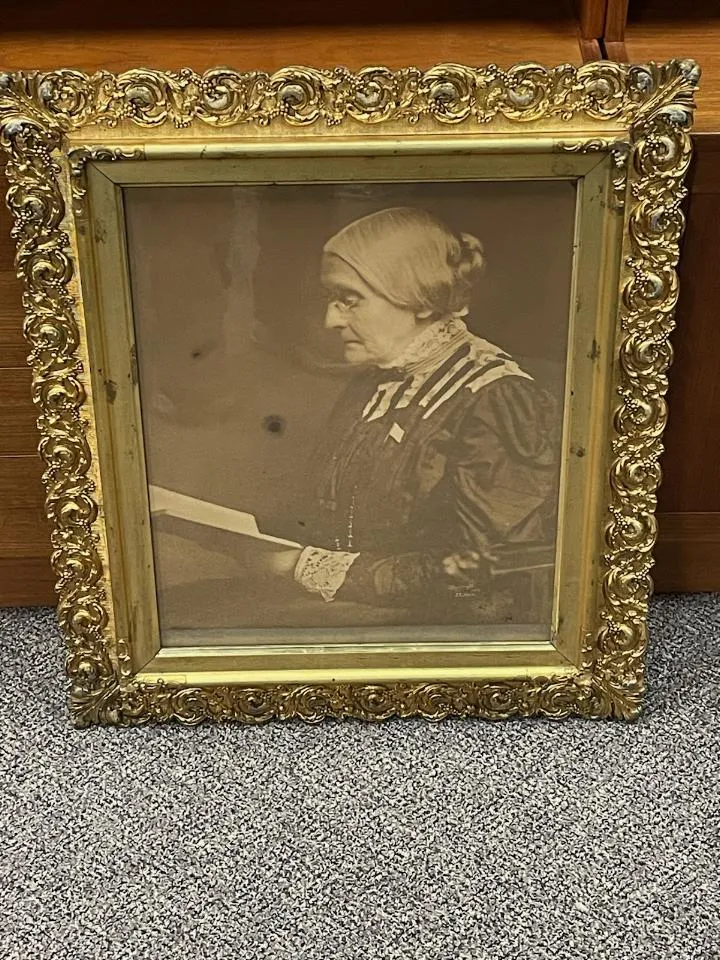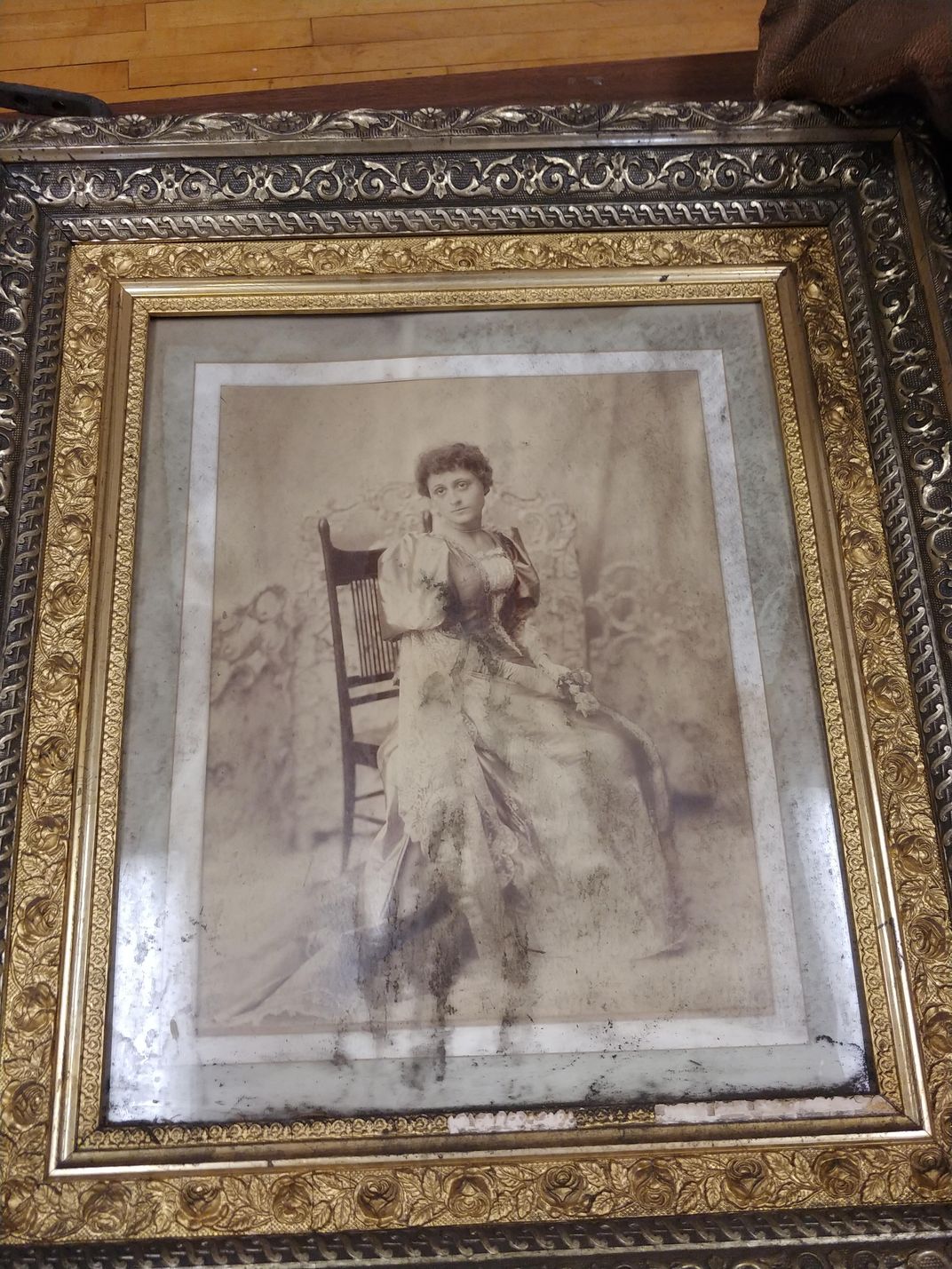Forgotten 20th-Century Photography Studio Found in New York Attic
The sealed-off space contained original portraits of suffragists Susan B. Anthony and Elizabeth Cady Stanton
:focal(1075x1186:1076x1187)/https://tf-cmsv2-smithsonianmag-media.s3.amazonaws.com/filer/89/63/896315e8-d938-421c-ba17-4a095a418338/1212201016b.jpg)
When lawyer David J. Whitcomb purchased a three-story building in Geneva, New York, last December, he didn’t expect to find a trove of century-old photographs—including a portrait of suffragist Susan B. Anthony—in its attic.
As Tina MacIntyre-Yee reports for the Rochester Democrat and Chronicle, the 43-year-old bought the property to house his law practice. But when Whitcomb and a friend removed water-damaged drywall from the building’s third-floor ceiling, they stumbled onto a previously unknown, sealed-off attic. Inside was a 20th-century photography studio filled with historic pictures and equipment.
“The first thing I saw was a whole bunch of picture frames stacked together and these frames are gorgeous,” Whitcomb tells CNN’s David Williams. “They’re the turn-of-the-century, they’re gold, gilded, and they shone really bright and I was like ‘Oh my God.’ I lowered myself and said ‘I think we just found the Goonies treasure.’”
The pair returned the next day, spending around 12 hours rifling through old cameras, photographs, backdrops and miscellaneous materials.
Per CNN, the man who sold Whitcomb the building was unaware of the attic’s existence, as were the individuals who’d purchased the property before him, in the 1960s. At some point prior to that, the space’s owners apparently converted the third floor into an apartment and concealed the attic with a drop ceiling.
According to Ben Hooper of United Press International (UPI), the items probably belonged to James Ellery, or J.E., Hale, a prominent photographer active during the late 19th and early 20th centuries. Hale’s name was written on many of the objects in the attic, including letters and photographs, and he once owned a studio next door to the New York building.
A major highlight of the discovery was the framed portrait of Anthony, which was taken by Hale in 1905, one year before her death. The sepia-toned picture shows the suffragist sitting while reading a book.
Speaking with Victoria E. Freile for a separate Democrat and Chronicle article, Whitcomb says, “It really was like stepping back into a time capsule.”
He adds, “I love history. I love antiquing. This was just such a snapshot the history of photography. It’s just so powerful to know that the glass (negative) was in the same room as Ms. Anthony.” (Whitcomb found fragments of the fragile glass plate but tells CNN that he fears the rest may be lost for good.)
Hale eventually gave the copyright of Anthony’s photograph to the Susan B. Anthony Memorial Association, which reproduced the picture on prints and postcards sold to raise money for the suffrage cause. The Library of Congress houses a scrapbook clipping with a copy of the portrait.
An ardent advocate of women’s suffrage, Anthony is widely considered one of the founders of the early women’s rights movement. Though she didn’t live to see its passage, her work helped lay the foundation for the 19th Amendment, which gave many—but not all—American women the right to vote upon its August 18, 1920, ratification. In recent years, however, Anthony has faced increased scrutiny over her racist remarks and exclusion of black suffragists from the mainstream movement, as Maggie Haberman and Katie Rogers noted for the New York Times last August.
Other important finds from the Hale trove include a photograph of fellow suffragist Elizabeth Cady Stanton, pictures of local sports teams, glass negatives, props, backdrops and frames.
Born in Pennsylvania in 1850, Hale was a photographer for most of his adult career, according to the Democrat and Chronicle’s Freile. During the 1880s, he lived near the Finger Lakes and photographed a number of women involved with the suffragist movement, in addition to Frances Folsom, who was then betrothed to President Grover Cleveland. In 1892, Hale moved to downtown Geneva, where he lived and worked until 1920. Around 1900, Hale moved his photography studio from a neighboring building to 35 Seneca Street—the property that Whitcomb purchased in December.
“[Hale] made a reputation in the photography world,” Dan Weinstock, former president of the Geneva Historical Society, tells the Democrat and Chronicle. “Certainly not Ansel Adams, but he was active in photographers’ associations and was a credible photographer.”
Whitcomb took all of the items to Canandaigua-based auction house One Source Auctions & Antiques for restoration and eventual sale. Appraisers estimate that the entire trove will sell for up to $100,000.
“It’s a neat collection,” auctioneer Aaron Kirvan tells the Democrat and Chronicle. “And it’s a very uncommon find, especially this being the main photo of Susan B. Anthony on file at the Library of Congress.”
/https://tf-cmsv2-smithsonianmag-media.s3.amazonaws.com/accounts/headshot/Isis_Davis-Marks_thumbnail.png)
/https://tf-cmsv2-smithsonianmag-media.s3.amazonaws.com/filer/d2/9f/d29f5226-2058-4b02-83db-6835964aeb72/0102211319.jpg)
/https://tf-cmsv2-smithsonianmag-media.s3.amazonaws.com/filer/15/0b/150be489-32a8-444d-adf7-8ced081b132f/0102211319d.jpg)
/https://tf-cmsv2-smithsonianmag-media.s3.amazonaws.com/filer/8b/70/8b7043ff-2f99-4cd0-981e-7a4a8a4ed190/138755366_715209552518732_8850519198271871532_n.jpg)

/https://tf-cmsv2-smithsonianmag-media.s3.amazonaws.com/filer/9c/cc/9ccc11bc-d9e7-4085-a72f-7311f6218e2d/1218201227.jpg)
/https://tf-cmsv2-smithsonianmag-media.s3.amazonaws.com/filer/46/4e/464e005e-11ee-490c-a84f-0d17521457a5/1212201801.jpg)

/https://tf-cmsv2-smithsonianmag-media.s3.amazonaws.com/accounts/headshot/Isis_Davis-Marks_thumbnail.png)